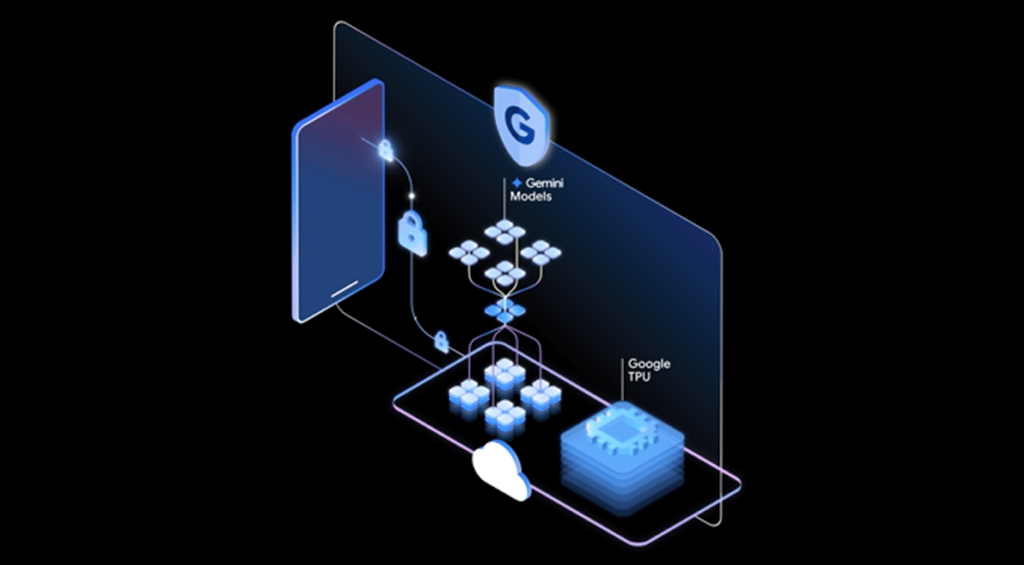Data analysis is a rigorous and iterative strategy encompassing cleansing, altering, and evaluating data to extract useful information.
A subset of data analytics, data analysis covers the many processes involved in cleaning and visualizing data to make it useful. How the data is treated determines how accurate and reliable the results of the analysis are, which means data analysis is an essential part of the analytics and intelligence process. Enterprises need to understand the role it can play in their decision-making and how the many processes of data analysis affect the information they rely on for those decisions.
How Does Data Analysis Work?
Data analysis begins with the acquisition of data from a wide range of sources. The data is thoroughly cleaned to correct flaws and anomalies before being transformed into an appropriate format and systematically categorized for enhanced identification and usability.
In the next stage, exploratory data analysis (EDA) is done using mathematical and statistical techniques such as regression analysis and machine learning to identify complex patterns and relationships. The data is then interpreted to create actionable insights and inform decision-making using visualization and reporting.
Importance of Data Analysis in Decision-Making
Data analysis benefits an organization’s decision-making in a number of ways, and can have an impact on the strategic, operational, and tactical elements of an organization. Here are some of the most common ways it can bring value to an enterprise:
- Identifying Market Trends: Data analysis helps organizations identify market trends, customer preferences, and industry movements; organizations analyze historical and real-time data and change their strategies to suit changing market needs, remain competitive, and uncover new possibilities.
- Risk Management: Analyzing data helps organizations discover possible risks and uncertainties, allowing for proactive risk management techniques; this is especially important in industries like banking and insurance, where risk management is critical for long-term success.
- Customer Insights and Personalization: Data analysis gives useful information on customer behavior, preferences, and feedback that can be used to tailor goods, services, and marketing efforts, increasing consumer happiness and loyalty.
- Operational Efficiency: Analyzing internal procedures and performance indicators can lead to increased operational efficiency and help organizations save money and increase productivity by detecting bottlenecks, improving procedures, and simplifying operations.
- Resource Allocation: Data analysis helps with effective resource allocation by giving information on the performance and return on investment of various initiatives, helping allocate resources to the most effective operations.
- Strategic Planning: Data-driven insights are useful for developing and improving strategies, whether entering new markets, releasing new goods, or modifying company models; data analysis informs decision-making and reduces risks.
- Performance Evaluation: Organizations can use data analysis to evaluate the performance of different departments, teams, or people, helping recognize accomplishments, highlight areas for improvement, and promote a culture of continual learning and development.
- Compliance and Regulation: In businesses with stringent regulatory requirements, data analysis aids in compliance by monitoring and analyzing data to fulfill legal criteria; this is especially important in areas like healthcare, banking, and pharmaceuticals.
- Innovation: Data analysis promotes innovation by giving information about upcoming technology, market disruptions, and customer demands; organizations can innovate and adapt to shifting landscapes by remaining up-to-date on technical breakthroughs and customer trends.
4 Types of Data Analysis
There are four types of data analysis—descriptive, diagnostic, predictive, and prescriptive—each of which enables businesses to improve their decision-making processes and get useful insights for better business strategies. Organizations may employ these different methodologies to understand historical patterns and uncover core causes and to predict future trends and prescribe optimal actions, promoting a holistic and informed decision-making environment.
Descriptive Analysis
Descriptive analysis is the process of summarizing and displaying essential aspects of a dataset to acquire a better understanding of its primary characteristics. Its objective is to give insights into what has happened in the past or what is happening now.
Representations such as charts and graphs are used to graphically communicate patterns and trends in data. By providing information in an understandable style, descriptive analysis promotes successful communication and allows stakeholders to absorb essential insights quickly and intuitively.
Techniques
- Summary Statistics: Sophisticated summary statistics such as skewness and kurtosis give a more nuanced knowledge of data distribution, making it easier to identify outliers and asymmetry.
- Data Visualization: Advanced visualization tools such as Tableau or Power BI provide interactive investigation, allowing users to dive deeper into patterns, trends, and outliers in the data.
- Tabular Representation: Python tools like pandas, a software library that offers data structures and operations for manipulating numerical tables and time series, make it easier to create tabular summaries and enable complicated data manipulations and calculations, increasing analytical depth.
Use Cases
- Tailored Marketing Insights: Beyond overall sales patterns, descriptive analysis may detect unique differences in product appeal between seasons or groups, providing tailored insights for marketing efforts.
- Influencing Public Policy: Descriptive analysis, which investigates demographic fluctuations across time, influences public policy choices by providing a complete picture of population dynamics and socioeconomic development.
Examples
- Enhancing Online Experiences: Analyzing website traffic patterns over time with complex statistical tools and visualizations can reveal nuanced user behavior and enhance online experiences.
- Improving Goods and Services: Using descriptive statistics to summarize complicated survey replies helps organizations obtain meaningful insights to improve their goods and services.
Diagnostic Analysis
Diagnostic analysis seeks to determine the causes of prior outcomes or performance, and aids in determining the reasons for certain occurrences or patterns. It is critical for understanding strategic decision-making because it provides significant insights into the underlying elements that influence outcomes. Organizations may use historical data and trends to solve difficulties and maximize future performance based on a thorough understanding of previous events.
Techniques
- Root Cause Analysis: Tools that go beyond visual depiction employ statistical approaches to quantify the influence of putative causes on outcomes.
- Comparative Analysis: Beyond fundamental benchmarks, sophisticated comparative analysis employs statistical hypothesis testing and regression analysis to identify significant differences and associations.
- Correlation Analysis: Using sophisticated statistical approaches such as multivariate regression allows for a more in-depth analysis of variable correlations by taking into account numerous factors at once.
Use Cases
- Quantifying Marketing Impact: Aside from identifying the causes of a drop in product sales, diagnostic analysis using techniques like regression analysis helps measure the influence of marketing efforts, product attributes, and external variables.
- Assessing Customer Complaint Significance: Investigating the reasons contributing to an increase in customer complaints entails not only qualitative analysis but also quantitative approaches for determining the relevance of each aspect.
Examples
- Prioritizing Causes in Manufacturing Defects: In manufacturing, root cause analysis entails not just finding faults, but also using statistical approaches to prioritize and resolve the most important causes.
- Understanding Nuanced Employee Turnover: Employee turnover research using advanced statistical approaches gives a more nuanced knowledge of the interactions between factors such as job satisfaction, remuneration, and organizational culture.
Predictive Analysis
Predictive analysis is the process of making educated predictions about future events based on previous data. It uses statistical techniques and machine learning models to predict trends, and delves into the complexity of data patterns and correlations, employing advanced statistical methods and powerful machine-learning algorithms.
In addition, it examines past data with a critical eye, not only predicting future trends but also discovering possible linkages and hidden insights that traditional analysis may miss. This in-depth investigation allows organizations to foresee future scenarios, improve resource allocation, and implement strategic initiatives with more precision, thereby improving decision-making processes.
Techniques
- Regression Analysis: Advanced regression approaches, such as logistic regression, enable the modeling of complicated connections while taking into account data interactions and nonlinearities.
- Machine Learning Algorithms: Ensemble approaches improve predicted accuracy by integrating the capabilities of numerous models, resulting in more robust insights.
- Time Series Analysis: Advanced time series analysis takes into account seasonality, trend breakdown, and exogenous factors.
Use Cases
- Dynamic Sales Prediction: Predicting future sales goes beyond simple forecasting, adding machine learning models to account for changing market circumstances, consumer habits, and external influences.
- Enhanced Stock Price Forecasting: For more accurate forecasting, advanced stock price prediction uses sentiment research from news and social media in addition to past market trends.
Examples
- Comprehensive Weather Prediction: Weather forecasting uses not just historical climate data but also complex meteorological models that include satellite photos and atmospheric simulations.
- Accurate Customer Churn Prediction: Machine learning algorithms that forecast customer turnover take into account not only historical behavior but also sentiment analysis from customer interactions to make more accurate predictions.
Prescriptive Analysis
Prescriptive analysis goes beyond forecasting outcomes and recommends what steps to take to attain desired results, seeking to maximize decision-making. It takes a holistic approach, drawing on insights from both historical data and real-time information to produce meaningful recommendations.
This analysis uses complex algorithms and optimization approaches to identify the most successful course of action while also taking into account numerous circumstances and trade-offs. It empowers decision-makers by offering a variety of strategic options and their possible impact, allowing companies to make educated decisions that are in line with their goals.
It also enhances a dynamic and adaptable decision-making process by constantly refining suggestions based on new data inputs, ensuring that plans remain relevant in an ever-changing business context.
Techniques
- Optimization Models: Linear programming in supply chain optimization takes into account not just cost minimization but also restrictions such as capacity limitations and demand variations.
- Simulation: Discrete-event simulation for scenario analysis entails not only recreating present processes but also investigating alternative situations to aid in complete decision-making.
- Decision Trees: Advanced decision trees include both basic binary judgments and sophisticated decision routes that incorporate several criteria and probability.
Use Cases
- Comprehensive Cost Reduction: Linear programming in supply chain optimization takes into account not just cost minimization but also restrictions such as capacity limitations and demand variations.
- Optimizing Customer Engagement: Recommending tailored marketing tactics for customer interaction employs both predictive analytics and optimization algorithms to determine the most successful mix of techniques for each consumer category.
Examples
- Sustainable and Efficient Vehicle Routing: Vehicle route optimization takes into account not just fuel consumption but also environmental effects and traffic circumstances, resulting in a more sustainable and efficient solution.
- Precision in Medical Interventions: Personalized healthcare techniques include not just proposing therapies based on patient data, but also taking into account genetic information and lifestyle characteristics to provide more accurate and successful medical interventions.
5 Key Benefits of Data Analysis
Data analysis enables organizations to extract important insights from large databases, resulting in many benefits. Businesses may use data analysis to tailor consumer experiences, inform strategic choices, simplify operations, reduce risks, and improve security measures. Organizations use systematic data interpretation to turn raw data into usable insight, stimulating innovation and allowing proactive adaptation to the dynamic demands of today’s corporate environment.
Personalize Customer Experience
Organizations may use data analysis to learn more about their customers’ interests, habits, and trends. Understanding individual consumer wants and preferences allows organizations to adjust their goods, services, and marketing activities, resulting in a more personalized and engaging customer experience.
Data analysis gives significant insights and patterns based on historical and real-time data. This permits educated and strategic decision-making at several levels of a business. Management may use data-driven insights to steer corporate goals, allocate resources efficiently, and respond to changing market conditions.
Streamline Operations
Analyzing operational data may assist in discovering inefficiencies, bottlenecks, and places for improvement in corporate operations. Organizations may increase overall performance by simplifying processes based on data-driven insights.
Mitigate Risk and Handle Setbacks
Organizations can discover possible hazards and weaknesses by analyzing historical data and patterns. Understanding these risks allows businesses to establish mitigation plans, increase resilience, and be better equipped to deal with setbacks or unforeseen obstacles.
Enhance Security
Data analysis is critical in spotting trends that indicate security concerns or fraudulent activity. Organizations may improve their cybersecurity by continually monitoring and analyzing data, detecting abnormalities, and responding quickly to any security breaches. This proactive strategy improves overall security while protecting sensitive information and assets.
Data Analysis vs Data Analytics
Data analysis, which focuses on historical data, seeks to comprehend prior trends and patterns. It entails meticulously examining, cleansing, and modeling data to extract relevant insights, allowing for a retrospective knowledge of events.
Data analytics, on the other hand, extends beyond historical viewpoints, providing a comprehensive methodology that smoothly blends predictive and prescriptive components. It uses advanced statistical approaches, machine learning algorithms, and optimization models to evaluate past data, predict future trends, and recommend appropriate actions.
While they employ similar methodologies and both use data to aid decision-making, they differ greatly in scope, objective, and methodology. Data analysis is frequently retrospective, aiming to answer questions about what happened and why using previous data trends.
In contrast, data analytics broadens its scope to forecast future occurrences, offering insights into what is likely to occur and what measures should be taken to maximize results. This forward-thinking attitude integrates data analytics into proactive decision-making and strategic planning, resulting in a more thorough and actionable knowledge of complex data environments.
Bottom Line: Data Analysis Transforms Insights into Action
Organizations can take full advantage of the benefits of data analysis by carefully examining company performance throughout defined periods. The revolutionary impact of data analysis is shown by its ability to easily translate complex corporate insights into practical and actionable recommendations or solutions. By meticulously exploring historical data, organizations not only obtain a deep knowledge of previous performance but also uncover patterns and trends that serve as the foundation for informed decision-making.
This strategic use of data analysis not only promotes a thorough retrospective understanding but also creates the groundwork for proactive and optimal future activities. In essence, the prudent use of data analysis emerges as a critical force, providing a dynamic path for converting corporate insights into actionable initiatives and steering toward continuous excellence.
Enterprises can use data analysis and analytics efforts for a wide range of applications—here’s a look at five ways brands can better employ them to meet their goals.









